Some people forage, some garden, some do both. What’s important when you garden is to know which young weeds should go to the kitchen and which ones should go to the compost bin. Above is a small patch in the newer planting of my garden. Some of you might see some beet seedlings. There’s also a sweet potato from last year (they also have edible leaves) a radish and one out of place lettuce. But of the rest what are edible? The non-edibles are cud weed, Canadian Toad Flax, and a few grasses. The edible weeds? I’ll mention them, you find them: Spanish Needles, Western Tansy Mustard, Cucumber Weed, and Poor Man’s Pepper Grass.
Never lacking for a theme two yellow plants caught my eye this week, one delicious the other deadly. On the positive side there are Loquats. Light to dark yellow they are tart to sweet and can be used in a variety of ways. Loquats are eaten fresh off the tree. They can also be preserved, made into jellies, pies, wine or dehydrated. Even the seeds can be used (carefully.) Both introduced and naturalized you can find as many free Loquats as you like to have. To read more about them go here. The other “yellow” I noticed this week was the toxic Butterweed, or Senecio glabellus (though by now they may have changed the name again.) What is deceptive about this plant is that before it blossoms, and from a short distance away, it resembles what some mustards. It likes damp places or places that are temporarily wet this time or year (or well-watered.) Worse, it has a nice flavor but has a class of chemicals that can shut down your liver permanently. Once it blossoms it clearly is not in the mustard family but it is a plant you have to avoid. You can go to this page and scroll down to see a picture of it.
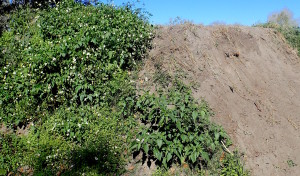
Piles of dirt are foraging opportunities as was this one at Blanchard Park. It has half a dozen edible species on it. Photo by Green Deane
We had an excellent turn out for our first class in a new location, Blanchard Park. It’s a long recreational area that borders the Little Eco River on the east side of Orlando. The total number of edible species there will depend upon seeing what different species one finds in other seasons but we saw around five dozen different edibles species this past weekend. The river provides this location a slightly different kind of water resource and place to explore (and after class you can go fishing!) The one surprise I have found thus far is more deadly Spotted Water Hemlock than I would have expected. I saw it on both sides of the river and in some reasonably dry locations (odd for a plant that likes to grow in water.) It is very deadly. The only other location I teach at regularly that has the Water Hemlock is Jacksonville.
Upcoming Foraging Classes:
Saturday, March 19, Colby-Alderman Park: 1099 Massachusetts Street, Cassadaga, Florida, 9 a.m.
Saturday, March 26th, Dreher Park, 1200 Southern Blvd., West Palm Beach, 9 a.m.
Sunday, April 3rd, John Chestnut County Park: 2200 East Lake Road, Palm Harbor, Florida, 9 a.m.
Sunday, April 10th, Wekiva State Park, 1800 Wekiwa Circle, Apopka, Florida 32712. 9 a.m.
Sunday, April 17th, Bayshore Live Oak Park, 2200 East Lake Road, Port Charlotte, Florida. 9 a.m.
Sunday, May 1st, Wickham Park: 2500 Parkway Drive, Melbourne, Florida 9 a.m.
Saturday, May 7th, Blanchard Park, 10501 Jay Blanchard Trail, Orlando, FL 32817. 9 a.m.
For more information about classes go here.
Want to identify a plant? Perhaps you’re looking for a foraging reference? You might have a UFO, an Unidentified Flowering Object you want identified. On the Green Deane Forum we — including Green Deane and others from around the world — chat about foraging all year. And it’s not just about warm-weather plants or just North American flora. Many nations share common weeds so there’s a lot to talk about, such as the one to the left. There’s also more than weeds. The reference section has information for foraging around the world. There are also articles on food preservation, and forgotten skills from making bows to fermenting food. Recent topics include: What Is This? Is This a Type of Chaerophyllum? Asystasia gangetica. Piper auritum, the tropical sassafras. New Mystery. Aesculus pavia. Bull Thistle? What A Waste. Like a Viola. Viola Bicolor. Urban Lawn Weed. Drymaria Cordata. Wild Blueberry blossoms? Foraging Group Ft. Lauderdale. Red Berries. Huge Thorns on Leaves. How Could An Infant Be Fed By Foraging? You can join the forum by clicking on the button on the upper right hand side of this page.
All of Green Deane’s videos are available for free on You Tube. They do have ads on them so every time you watch a Green Deane video I get a quarter of one cent. Four views, one cent. Not exactly a large money-maker but it helps pays for the newsletter. If you want to see the videos without ads and some in lightly better quality you can order the DVD set. It is nine DVDs with 15 videos on each. Many people want their own copy of the videos or they have a slow service and its easier to order then to watch them on-line. They make a good gift for that forager you know. Individual videos can also be ordered. You can order them by clicking on the button on the top right of this page or you can go here.
And it should be mentioned this is newsletter #200. As one might guess they have been something of an evolving journey. The first Green Deane Newsletter was in 2010. They were monthly back then primarily because of mailing issues. I emailed mailed them in batches of 100 because if one of the email addresses had a problem all 100 would be rejected. It is much easier to find one problem in 100 addresses than 1,000. They would also all get rejected if one recipient mailbox was full. So I spent far more time mailing the newsletter than writing it. Now the mailing — approaching 10,000 subscribers — is done by a company which currently costs $75 a month… so my opinion has some value.
About a year after the newsletters were started they became weekly. This was taking advantage of a bad situation. Apple was ending their server service thus I had to get a new service provider and build a new website. That forced change also allowed for a weekly newsletter but mailed by others. Tuesday afternoon was selected for publishing time because studies (then) showed that was when a newsletter was most
likely to be read and least likely to get deleted or shunted into trash. It also gave me one day to get over the weekend before having to produce a newsletter. Except for time spent hiking the Appalachian Trail the newsletters have been regular. I even managed to have surgery in 2014 but not skip a week because all I could do for a month was write from a bed but I had plenty of time to write. One of the disadvantages of a weekly newsletter is having to write one nearly every week, a chore I learned decades ago when I had to write a weekly newspaper column. One unique aspect of a weekly foraging newsletter is that they can be republished years from now in the same week of the year and most of the information will still be relevant to a new audience because of the seasonality of foraging. (I knew an insect newsletter that did exactly that, published for many years then republished for the same number of years.) For me the biggest advantage of writing a newsletter is it keeps me involved, learning, and connected. It’s positive force in a negative world.
And now, for the heck of it, here is that first newsletter from 2010 just as it originally appeared, without photos because the program then didn’t allow them…
Green Deane
Newsletter, June 2010
WHY FORAGE?
Often I am asked “why forage for wild food?” Why that question is asked is probably worthy of an article unto itself. But here let’s focus on one answer (out of several.) Let’s look at cost.
The U.S. Bureau of Labor Statistics released recently their March (2010) number crunching. Food prices in March rose 2.4%, the sixth month in a row food prices have gone up, and the largest jump since 1984. But that’s counting everything. If you look at specific categories the numbers are more revealing.
Fresh and dry vegetables went up up 56.1%, fresh fruits and melons 28.8%, fresh eggs 33.6%, pork 19.1%, beef and veal up 10.7% and dairy products up 9.7%. All of that makes the Bidens alba growing in my yard all the more attractive, maybe even that pesky squirrel. Some think “food inflation” will continue even if the economy improves. Apparently that is what is happening in India now. Some investment gurus are talking about investing in, literally, food, and others like Warren Buffet are recommending investment in agriculture or countries with a lot of agriculture.
It’s interesting the price of plant products rose more than animal products, though animal products are also dependent on plants, however not necessarily plants that man grows. The difference is commercial plants for people need chemicals and tending whereas many plants for animals — range grass for example — do not nor do most of the weeds we eat. However, contrary to what most folks think foraging is not free. There are costs. Discounting time, one has to get to a place to forage. One has to transport the collected food and the food has to be cleaned. That requires some cost, from calories to bike tires to gasoline to clean water.
One also needs to know which plants to pick. That knowledge can come free, and/or from lessons, books, and internet services. My personal plant library of some six dozen books cost me about $1,000. You may never own more than one foraging book but my point is wild food is not totally free. But, it is the next thing to free, and the cost a lot less than store-bought food and is less subject to inflation and taxes. Once you have foraging knowledge inside your head any cost gets prorated over time to the point of being negligible. A $20 course and a $30 book totals up to $50 but if you and yours can eat for a lifetime it’s a good investment. It’s also a certain measure of independence and security. I’m not suggesting foraging an answer to the growing food problem. With unemployment hovering near 17% (depending who’s counting and how they count) there are nearly 40 million Americans on food stamps, up 22.4% over this time last year. The government is now paying out more in benefits than it is taking in. At some point entitlement programs will be cut back. However, 40 million people can’t go out and forage even if they knew how. The impact on the environment would be devastating. The realty is not even one percent of them (400,000) are interested in foraging. I doubt that even one tenth of one percent (40,000) are interested. Maybe one hundredth of one percent might be interested, 4,000, which is close to my number of subscribers. See how uncommon you are?
This we know: Food prices are rising, sharply. There is some cost associated with learning how to forage, and most people are not interested in foraging — at least not now. I think that adds up to a strong argument that not only is it economical to forage but that it will be a steady food supply because others don’t see the value it represents, and even if they did they are far behind you in the learning curve. Learning to forage can mean you have something to eat when they don’t. You certainly have more variety and better nutrition.
When you learn to forage you are doing more than identifying edible wild plants. You are also developing a skill and confidence. No matter how dire the need, those cannot be learned overnight. Foraging is like rigging, you learn mostly by doing and that cannot be rushed. You’re already way ahead of millions.
A NEW VEGETABLE
If you could choose one wild plant to become a commercial product, what would it be? Many people have tried to make poke weed (Phytolacca americana) a green in your local grocery but toxicity and the required two-boilings has always plagued its commercialization. The ground nut (Apios americana) was one of the original exports from colonial America but it has at least a two-year growth cycle. Louisiana State University (1984-96) developed a commercial variety but the program disappeared when the professor-in-charge, Bill Blackmon, changed colleges. In 1962 Professor Julia Morton of the University of Miami recommended Spanish Needles (Bidens alba) become a commercial product. Nearly a half a century later that hasn’t happened, perhaps because of flavor or the fact it can grow almost anywhere as a weed. My candidate would be Suaeda linearis, Sea Blite, and if I could figure out how to do it I would.
Sea Blite has everything going for it except perhaps for its name. It’s mild but tasty, has excellent texture, can be eaten raw or cooked though cooked is the usual way. It’s nutritious, stores well, looks good, easily grows in salty ground (read unused land) and even feels good to handle. About the only downside, for me, is that I have to drive about 55 miles to get some. I need to introduce it to my garden.
Think of Sea Blite as a Chinopodium that likes to grow in salty places, either near the ocean or salt licks. It has a high sodium content but boiling reduces that significantly. If you live anywhere near the ocean or inland salty areas, now and the next few months is the time to go looking for seablight and seepweeds. To read more about Sea Blite click here.
HOW SAFE IS FORAGING?
Excluding mushroom hunters, plant foragers have a good track record of staying alive. Plant foragers have about one accidental death every 20 years, and usually that’s from eating some member of the poison hemlock crowd. That should be a word to the wise. Locally, the nemesis is the water hemlock and it grows exactly where watercress grows. When I collect watercress I look at every piece before I collect or cook it, every single piece. Actually, there are several deadly local plants: Water hemlock, the Yew, Oleander, Castor Beans, and the Rosary Pea, the most toxic seed on earth. I have been asked to do a video on toxic plants but I am afraid some idiot will not understand what the video is about and eat the wrong plant.
Most plant poisonings involve toddlers eating from the landscaping around their home, with the next highest incidence is toddlers eating the landscaping from their neighbor’s yard. Why we fill our home space with toxic plants rather than edible landscaping is beyond me.
Excluding suicides, adult poisonings are extremely rare. So, don’t be afraid of foraging. Just be careful. Study. Take lessons. Go with a friend. ITEMize!
CAN A FORAGER FIND TRUE LOVE?
According to the Timberland Company they can. The New Hampshire-based outfitting company has released the results of their 2010 eco-love survey. Oddly, it was male-centric. Apparently men are looking for love in all the green places. (Don’t shoot this messenger.)
Must Love the Earth. Fifty-four percent of men would question whether to start a relationship with a woman someone who litters. Others would ponder if a woman was worth dating if she doesn’t recycle (25%), leaves the lights on when not at home (23%) or drives a gas-guzzler (21%).
Guys Dig Green. One-quarter of men think “green” women make better life partners (24%) or friends (27%) than those who aren’t so environmentally responsible.
Plan an Eco-date. 41% of men would be more interested in an “adventure” date like hiking or rock climbing or a charity or service-focused date like tree planting, rather than the traditional “dinner and a movie” date.
Green eco-lebrities. Men say Cameron Diaz (27%) and Kate Hudson (26%) would inspire them to go green. Feelings are mixed on eco-celeb Jessica Biel. Twenty-one percent of men say she’s an inspiring green celeb, but only 13 percent of women agree.
Going Green. Almost a third of Americans (30%) feel they need to make more of an effort to purchase eco-friendly clothing over the next year. And, before you set out on your eco-date, consider eating locally grown food. More than half (53%) of Americans think that eating locally grown foods should be a priority in the next year. Almost three-quarters (72%) think Americans need to switch to energy-efficient light bulbs, 57 percent think Americans need to green their daily commutes by carpooling, walking or biking to work and 47 percent want others to take showers instead of baths to save water (showering with someone even saves more water.)
SALT SELLER
There’s less salt in your future but not less salt flavor, so it is claimed. PepsiCO did some research and found that only 20% of the salt on their products contributed to taste whereas 80% got swallowed undissolved and untasted. So the company successfully set out to reshape salt crystals to melt faster on the tongue thus giving the same salty flavor but using 25% less salt. That would clearly cut costs for them in the future but the question is how will that be positioned on the label? 25% LESS SALT! LESS SALT MORE FLAVOR! Heck they might make an extra salty tasting product but claim it has normal salt levels. Quite a few possibilities. The new salt needs no approval, says PepsiCo, because it is just reshaped salt.
SPROUTS
The Weeping Holly (Ilex vomitoria “pendula”) has more caffeine in its leaves than any plant in North America.
This is newsletter 200.
If you would like to donate to Eat The Weeds please click here.

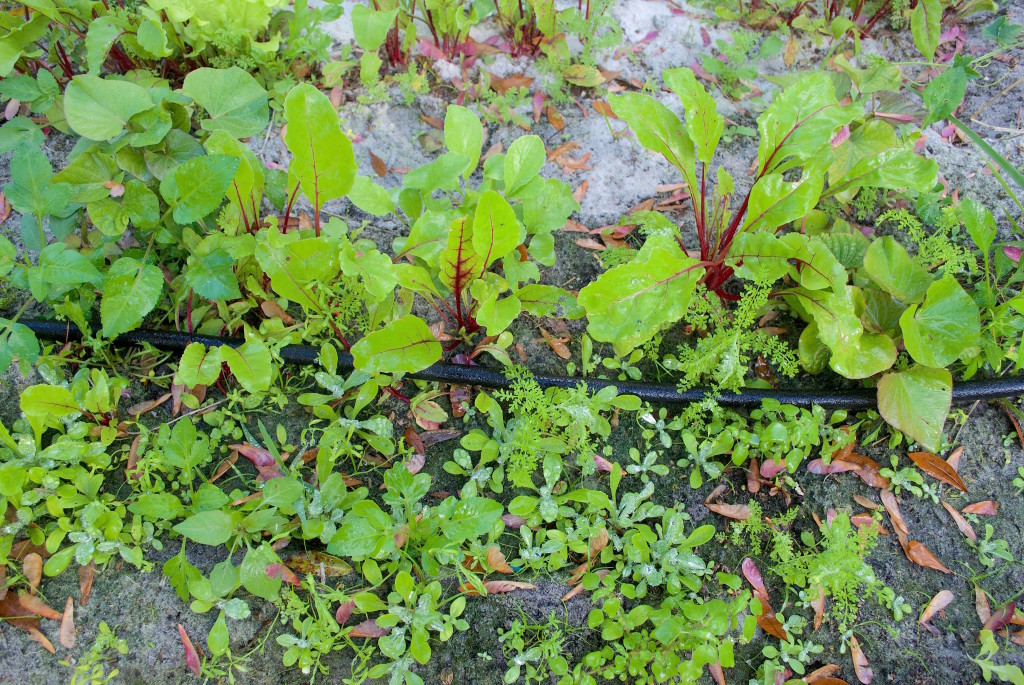
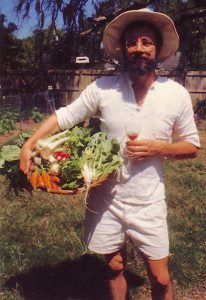

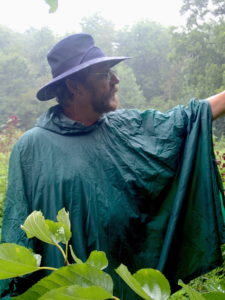
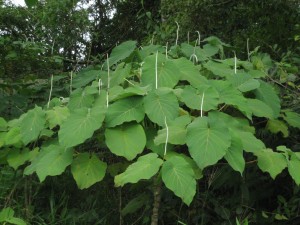
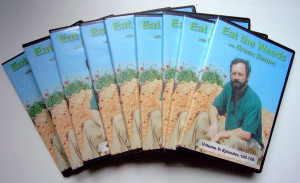
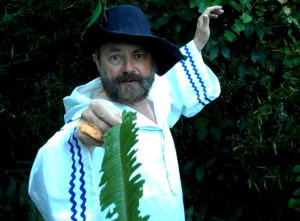
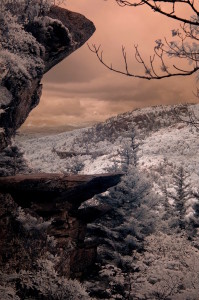

Hi, you mentioned in the newsletter that “a $20 course and a $30 dollar book” makes a $50 investment in going green (foraging). I started foraging a few years back, but am a total novice at it. I live in the sonoran desert. What “$30 book” would you recommend for someone like me? Thanks T.J.
That was a rhetorical example I used six years ago… there are foraging teachers in your area, listed on my website, and a book you might be interested in is Edible and Useful Plants of Texas and the Southwest: A Practical Guide by Delena Tull.
I too have a pretty good library of plant I.D. and preparation and cooking books, about 17, of which I have never paid retail price. Some yard sales, flea markets and so on, but also library book sales. To my joy and simultaneously to my chagrin recently at a library book sale I found no less than seven books. Including edible and non-edible wild plants, wild game and seafood cookbooks and unbelievably Mr. Gibbons ‘Stalking the Wild Asparagus’. I asked librarian why these books were taken from the stacks and sold, because when I checked the stacks there were no replacements in this field. She stated that no one has a use for these antiquated books and they need the space to put up new stock. (I guess microwaving a frozen pizza makes more sense than learning about solar cooking, which was another book I bought at the sale.)I asked her how the hell she thinks our young people are going to learn to be self-reliant in the future and she just shrugged her shoulders and stated that young people will just have to learn to go to the grocery store like normal people. This is what our world is coming to; when the teachers and caretakers are so ignorant, it is hard for them to be a mentor or teacher. Thanks to you and your like minded brethren for all that you do.
Of course, that was several years ago… my collection has expanded some… as for librarians… have yo tried giving a library a book or two? The book has to be judged by a committee… thus I am not surprised that such cramped mentalities also take useful books of the shelves.
As you’ve advocated when you do it yourself (DIY) – gardening and foraging, you feel much enjoyment. Yesterday I mowed my grass lawn (12x8sq.m.) and was able to observe closely various weeds including “Tumalaika” vernacular for Gynatropis gynandra, Purslane, “Draisa” vernacular for Tribulus, and “Ushur” vernacular for Calotropis procera. The first two are edible. The second achievement I did today was making approximately 125g. jam using the well selected black berries of American Nightshade. Believe me it is delicious; I had it this same day in my breakfast. As dehydrated the berries taste somewhat like dry grapes – “sultanas”.
Thank you for your important reference on “Common Non-edible Plants and thank you most for the great objectives of keeping you and we as well involved, learning, connected and if I may add contemplating on mother nature – an important meenns in praying to God as I reckon it . Truly, that is carrying for a positive force in a negative world. On the occasion of the 200th issue, I wish you and all readers of Eattheweeds more progress and to continue to grow stronger and stronger ever after.
I don’t have any pellitory around here, but my son does. Since I supplement my meager income by foraging, would it be worth it to relocate it here or is it basically a nibble? I love variety but trying to concentrate on food sources that are worth challenging a bad back and creaky knees! Thanks!
It would depend where you live. It is found throughout The South.
It took me awhile to get ’round to reading this newsletter (life on the farm gets busy in the spring) but it was thoroughly enjoyable.
The ‘reprint’ of your first newsletter was fascinating. Never understood why most people would not be interested in foraging, but guess that is what ‘makes the world go around’.
Interestingly, many of the women among our family and friends would agree with thinking twice (or more!) about dating someone who litters. And prefer an ‘eco-adventure’ date to ‘dinner and a movie’. Ditto for generally living with an awareness of our impact on the planet, and making more than basic efforts to minimize it.
But the men and women in our family all agree that fluorescent bulbs are bad for the environment and those living with them. Who needs m0re than a few dollars to run incandescent bulbs, anyway? In Florida it may be different, but in the northern tier of the country, the heat produced by incandescent bulbs is welcome at least 9 months of the year, especially after dark, and that is when we have our lights on. So, thank you, but we prefer mercury-free lighting.
And bulbs with a smaller ‘footprint’ than LEDs.
Best regards~